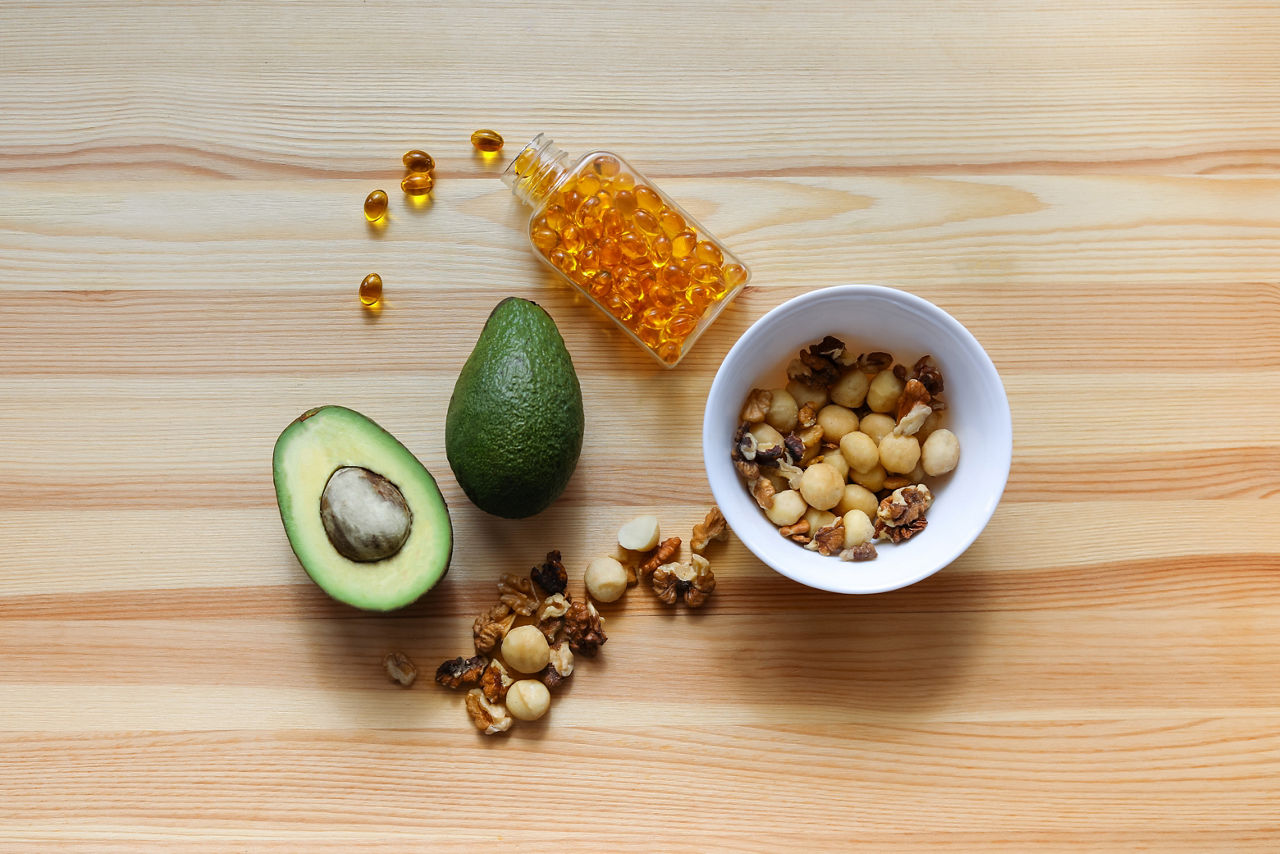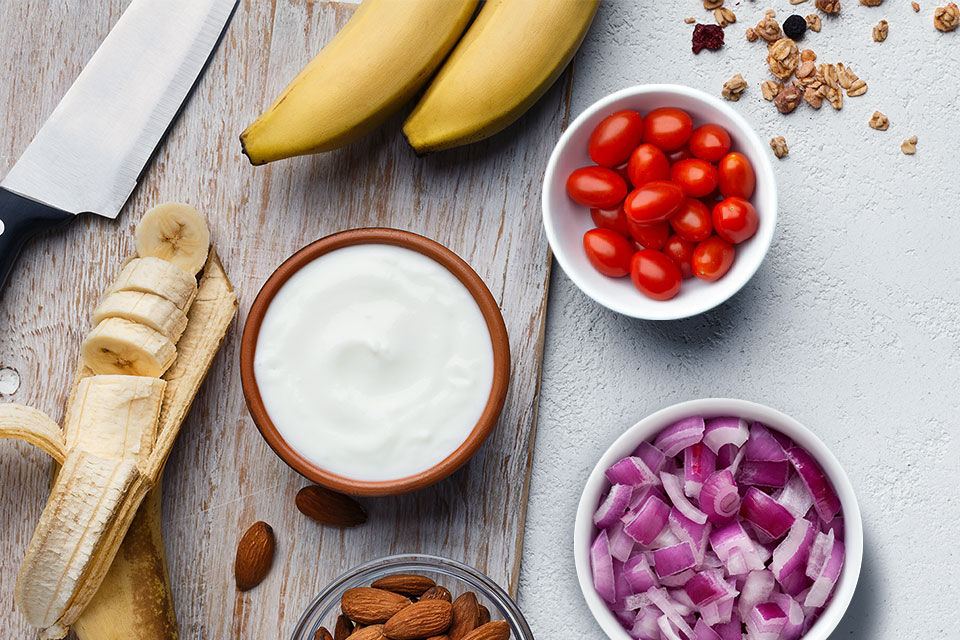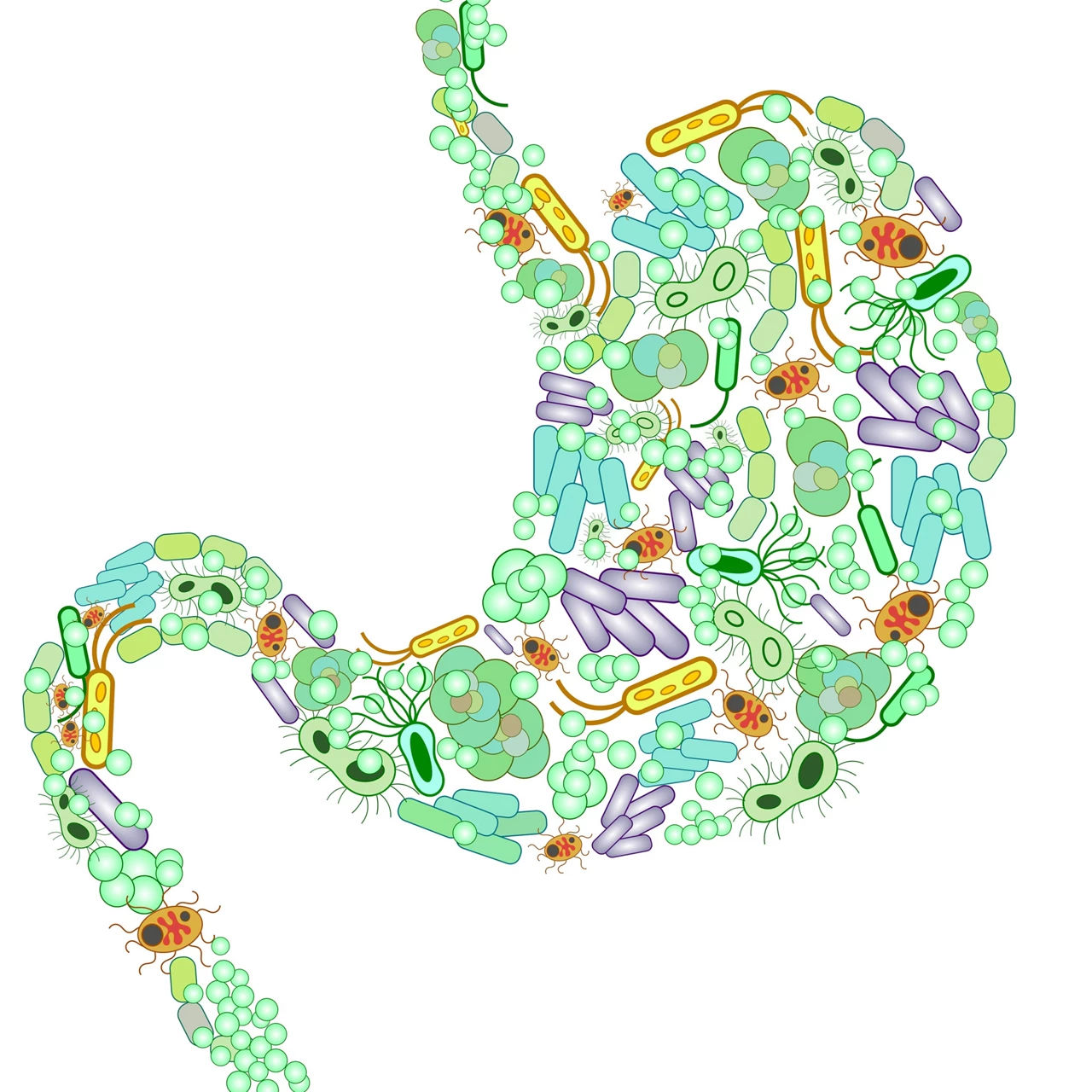The importance of long chain polyunsaturates for infant health and development
Long chain polyunsaturates (LCPs) are vital micronutrients for infancy, provided through breastmilk and a limited number of foods suitable for weaning. Essential to the normal structure of cell membranes, they affect every process, function and structure within a baby’s rapidly developing body.

Please log in to access this content
Simply log in or register to Nutricia Academy today to access this content as well as a host of other trusted education resources.

In this detailed article, Dr Alex Richardson explains the importance of two LCPs in particular – Omega 3 DHA and Omega 6 AA. She explores the role of LCPs in the rapid brain development that occurs during infancy, as well as the contribution to cardiovascular health, the immune system, and visual and cognitive development.
With many mothers unaware of the benefits of these fats and the risks of an inadequate supply, healthcare professionals have an opportunity to educate mums and improve the nutritional environment for their babies.
Introduction
Good nutrition is fundamental at any age for physical and mental health, but it is particularly crucial for infants and toddlers, because the first few years of life represent a critical stage of development. Malnutrition during this period has long-term implications, and if serious or prolonged it can permanently impair not only physical growth and general health, but also brain development and mental functioning.1
The physical growth of infants is extraordinarily rapid (a child typically achieves half its adult height by the age of three), and this is also a crucial period for brain development.
New connections between brain and nerve cells are being made constantly in response to the child’s environment and experience, while redundant cells and connections are pruned. This remodelling of brain networks is crucial for the normal development of visual, attentional and motor skills, cognition and language. All of the nutrients required to support these processes, as well as the child’s rapid physical growth, must be provided by diet.
Most young children get enough energy (calories) and protein from their diets, so the ‘Type A’ malnutrition associated with starvation is fortunately rare in the UK. In fact, energy intake is often excessive, as shown by the rising prevalence of childhood obesity. ‘Type B’ malnutrition, however – meaning a lack of essential micronutrients – is widespread, owing to modern lifestyles, a lack of education on nutrition, and the reliance on highly processed foods. ‘Essential micronutrients’ include not only vitamins and minerals, but also some special types of fats, known as Omega 3 and Omega 6 polyunsaturated fatty acids.
Omega 3 and Omega 6 long chain polyunsaturated fatty acids (LCPs)
The only essential fats are the Omega 3 and Omega 6 polyunsaturated fatty acids (PUFA). We absolutely need these fats but cannot make them for ourselves, nor can we convert one type into the other. Both therefore have to be provided by the diet, and in the right balance.
There are many different forms of both Omega 3 and Omega 6 fats, as shown in figure 1. The simplest are Alpha-Linolenic Acid (ALA) and Linoleic Acid (LA) respectively, found in plant and seed oils. However, for human health it is not these shorter chain forms that are most important, but the longer chain, more highly unsaturated Omega 3 and Omega 6. These very special long chain polyunsaturated fatty acids are known as LC-PUFAs or LCPs, and they are needed for the normal development and functioning of the brain, heart and immune system, as well as for many other aspects of physical and mental health, wellbeing and performance2. Meat, eggs and dairy products all provide pre-formed Omega 6 LCPs, while fish and seafood are the main natural sources of the key Omega 3 LCPs.
Dietary sources of LCPs
Modern western-type diets rich in processed foods provide a significant excess of Omega 6 over Omega 3 fats – both the shorter chain forms (found in vegetable oils), and the pre-formed LCPs (from animal products or seafood). This high ratio of Omega 6 to Omega 3 LCPs is thought to increase the risks for a wide range of physical and mental health disorders, but before we consider the health implications, it is worth considering the dietary sources of these fats in order to see how this imbalance arises, and how it can be redressed.
The key Omega 6 LCP, AA, is provided by meat, eggs and dairy products, so most people consume plenty of this, with only vegan or other highly restrictive diets lacking a good supply. Its precursor, linoleic acid (LA), is even more abundant, as this short chain Omega 6 is found in all vegetable oils, nuts, seeds and grains and all products that contain these (which includes almost all processed foods).
By contrast, fish and seafood are almost the only natural foods that provide appreciable quantities of the key Omega 3 LCPs, EPA and DHA. Organ meats (such as liver, kidneys, heart or brain) can provide a little, and small quantities are found in the eggs of birds that forage in the wild, or whose diets are fortified with Omega 3. Omega 3 LCPs can also be obtained from some species of algae, and these sources are used in some types of infant formula, as well as in supplements and fortified foods.
The shortest chain Omega 3, ALA, is found in green leafy vegetables, and some nut and seed oils (flax or linseed oil is one of the richest sources, and unlike most other vegetable oils it actually contains more ALA than LA). However, ALA does not have the same health benefits as EPA and DHA, and as emphasised already, little or none is converted to DHA.
Why LCPs are so important for infant health and development
Both Omega 3 and Omega 6 LCPs are needed at every life stage to support general health and wellbeing, but they are particularly important in early life, for many reasons.
Two LCPs in particular – Omega 3 DHA and Omega 6 AA – are essential to the normal structure of all cell membranes, but especially in cells of the brain, heart and other vital organs. They are needed to keep membranes fluid, which is essential for normal cell signalling. Around 60% of the brain’s dry mass is fat – so these dietary fats are particularly important for healthy development and functioning of the brain and nervous system.
AA is crucial to body growth and early brain growth, while DHA helps to shape the brain’s micro-architecture during prenatal development4, and enhances both the growth of brain cells, and the connections between them5. DHA is particularly concentrated at synapses (where nerve cells connect with each other) and in photoreceptors, where it makes up 30%–50% of the retina6. The unique properties of this Omega 3 LCP are critical for the fast electro-chemical signalling needed to support both vision and many aspects of cognition, helping to explain why DHA makes up over 95% of the Omega 3 found in brain and nerve tissue7.
In addition to their structural roles in cell membranes, LCPs play innumerable functional roles in human health, because a huge array of different substances made from them act as key regulators of chemical signalling systems in the brain and body (see figure 2). These substances are needed to maintain a healthy heart and circulation, for hormonal balance, and for normal immune and nervous system functioning. Many chemical neurotransmitters, including dopamine and serotonin, are also influenced by LCPs or their derivatives, as are numerous other biological processes, including gene expression and regulation.
Before birth, the supply of LCPs is obviously dependent on the mother’s diet and body stores. Their importance to the developing infant is illustrated by the fact that the placenta preferentially transfers DHA and AA, while actively inhibiting transfer of the shorter chain Omega 3 and Omega 6, ALA and LA8. Accumulation of these key LCPs by the unborn baby is fastest during the last three months of pregnancy, when the brain and nervous system are developing rapidly, so infants born prematurely are at particular risk of LCP deficiencies.
Population studies show that higher maternal intakes of fish and seafood during pregnancy are associated with better motor skills, social skills and verbal intelligence in the children up to 8 years later (controlling for other relevant variables)9, and also with fewer symptoms of depression in mothers during pregnancy10. Randomised controlled trials (RCT) – which can provide definitive evidence of causal relationships – have shown that Omega 3 LCP supplementation during pregnancy reduces both prematurity (especially early preterm birth) and low birth weight11 – both of which are associated with poorer child developmental outcomes. The largest such RCT to date also found a lower prevalence of some food allergies and atopic eczema at 12 months of age in the children of mothers receiving DHA supplementation12, consistent with previous reports. Furthermore, although average cognitive and language development did not differ between treatment groups, prenatal supplementation significantly reduced the proportion of children who were ‘slow developers’ at 18 months (from almost 7% to below 4% of all infants in this general population sample)13.
Specific benefits for health and development of dietary LCPs in infancy
After birth, the infant’s needs for LCPs must be met from its own dietary intake, or by in vivo synthesis from LA and ALA, which is limited. Breastfeeding and/or formula only is recommended for at least 6 months, followed by gradual weaning onto a more varied diet from 6–12 months, taking care to avoid foods that are unsuitable for this age group. A wider variety of foods can then be introduced over time to older infants and toddlers (from 1–3 years of age), and by around 5 years, children should be able to consume a full range of (healthy) adult foods114
Breastmilk contains AA and DHA (and smaller quantities of some other LCPs) – and existing evidence supports the idea that LCP nutrition is a key factor linking breastfeeding to its well-known advantages for infants’ cognitive development8.The concentrations of AA found in human breastmilk are fairly consistent, but DHA concentrations are highly variable and directly reflect mothers’ dietary intakes. These range from as little as 0.06% to 1.4% in some populations, averaging around 0.32% worldwide15, although 1% DHA has recently been suggested as optimal, following a careful study of Tanzanian mothers and infants consuming traditional diets with differing fish intakes16. Higher levels of breastmilk DHA have been linked with better infant neurodevelopment and/or visual function17, and also with lower rates of postnatal depression in mothers18.
It is well established that breastfeeding is optimal for children’s health and development. As this is not always a viable option, however, considerable research has been undertaken to optimise the nutritional composition of infant formulae; much of this has focused on the potential benefits of including the main Omega 3 and Omega 6 LCPs to improve comparability with breastmilk19.20. Some infant formula still provides only the shorter chain ALA and LA, but increasing evidence shows that the addition of the preformed LCPs DHA and AA can be beneficial, at least under some circumstances<>21,22.
To date, RCT evidence for specific benefits for infant health and development from the inclusion of LCPs in infant formula still remains largely ‘inconclusive’. This is perhaps unsurprising, given the many methodological difficulties in establishing causal links between infants’ dietary intakes and specific health outcomes – particularly ones that may not become apparent until much later in life. Key issues include the heterogeneity of populations studied, the dosage and duration of supplementation, varying background diets and other individual differences (both environmental and genetic), and the sensitivity and specificity of the outcome measures used. Nonetheless, both the safety and tolerability of LCPs is well established, and current evidence points to some specific benefits for physical and mental health and development from LCP supplementation during infancy and early childhood.
Cardiovascular and immune system health
Both AA and DHA are required for normal cardiovascular development and function, and Omega 3 LCP deficiencies are well-known to increase cardiovascular disease risks in adults. This is an obvious example of a health outcome which is too long-term for definitive evaluation (i.e. via RCTs) of possible causal effects from LCP supplementation during infancy alone. However, the addition of DHA to infant formula has been shown to reduce both resting heart rate and heart-rate variability in infants23,24, indicative of better cardiovascular function.
Similarly, the essentiality of Omega 3 and Omega 6 LCPs (and the balance between them) for immune system health and development is firmly established, as substances made from the main Omega 6 LCP AA are vital for initiating and sustaining inflammatory responses, while both EPA and DHA and their derivatives help to reduce and resolve inflammation, via many different mechanisms (see figure 2 for some of these)25. As noted above, several RCTs have now shown lower rates of allergy in babies born to mothers supplemented with Omega 3 LCPs during pregnancy26. Studies of such supplementation in babies or older infants aimed at reducing childhood allergies have been less conclusive, suggesting that the timing of supplementation in relation to immune system maturation may be a crucial factor. Some trials have shown that Omega 3 LCP supplementation in infancy can decrease risks for allergies and/or infectious respiratory illness, but longer-term benefits of this kind from postnatal supplementation have not yet been demonstrated.
Visual and cognitive development
The accumulation of DHA (and to a lesser extent AA) in the brain and nervous system remains extremely rapid throughout the first few years of life, reflecting the fact that infancy is such a critical neurodevelopmental period, and it continues right through to adulthood when the brain finally reaches maturation. Animal and human studies, epidemiological evidence and controlled trials all testify to the critical importance of Omega 3 LCPs for normal brain development and cognitive function – and these fatty acids are now acknowledged to underlie at least some of the advantages of breastfeeding for cognitive development – and yet it has so far proved very difficult to establish unequivocal benefits for visual or cognitive development from the addition of DHA (and AA) to infant formula.
Omega 3 DHA is essential for vision, and improvements in visual acuity have often been reported from the addition of this LCP to infant formula (together with AA), particularly in premature infants, although study designs have been heterogenous and findings not always consistent. A dose-ranging study by researchers highly experienced in this field showed that DHA supplementation of formula at 0.32% of total fatty acids (corresponding to average breastmilk concentrations) improved visual acuity in healthy term infants, as measured objectively by electrophysiological responses. However, higher amounts of DHA supplementation were not associated with additional improvements29.
With respect to cognitive development, RCT findings have been similarly mixed, although two recent trials addressed some of the well-known methodological issues by using more sensitive measures and longer follow-up, and both showed positive results. In one, infants receiving formula enriched with LCPs from 0–12 months were found to perform significantly better than controls on several measures of intelligence at the ages of 3–6 years30, and in the other, faster speed of information processing at 6 years of age was reported in children who received LCP-enriched formula for the first 4 months of life31.
Relative deficiencies in Omega 3 LCPs have often been reported in children with attention-deficit hyperactivity disorder (ADHD) and related childhood developmental disorders of behaviour and learning32. In animals, prenatal Omega 3 deficiency reduces dopamine in frontal cortex, leading to hyperactivity and attentional impairments potentially relevant to ADHD and related conditions in humans. Furthermore, some of these deficits appear reversible with postnatal dietary Omega 3 supplementation, while others do not. These kinds of behavioural outcomes have so far received little attention in human trials of LCP supplementation in pregnancy or infancy. However, in older, school-age children, RCTs have shown that Omega 3 LCP supplementation can reduce ADHD symptoms (inattention, hyperactivity and impulsivity) both in children with specific behaviour and/or learning difficulties33, and in the general school population34. These kinds of ‘behavioural symptom’ measures therefore seem worth considering in future trials of LCP supplementation during infancy.
Practical advice for healthcare professionals
At any stage of life, a healthy, balanced diet providing adequate intakes of all essential nutrients is fundamental to optimal health, development and wellbeing. This is particularly important for pregnant and breastfeeding mothers, however, and for infants in their first few years, because early life is a critical time period during which nutrition can have long-term effects on children’s health and development.
Ideally, healthcare professionals should help mothers-to-be to optimise their nutritional status even before pregnancy starts, and to maintain a healthy diet throughout. As already noted, population Omega 3 LCP intakes are low, and both pregnancy and breastfeeding can deplete maternal stores further, so many mothers might benefit from increasing their own intakes throughout this period, either via increased fish and seafood intake or supplementation.
Breastfeeding is optimal for all babies whenever possible, and this (and/or infant formula if necessary) should ideally be used exclusively for the first 6 months. However, the DHA content of breastmilk varies widely according to the DHA content of mothers’ diets, with the lowest levels typically found in vegetarians and vegans. Mothers’ own DHA status is compromised by breastfeeding, so this can increase the risk of maternal DHA deficiency, as can multiple births or closely-spaced pregnancies.
Between 6–12 months of age, breast or formula feeding should be gradually supplemented with other suitable foods. From this point, some cooked fish and seafood can be included (puréed or flaked, and taking care to remove any bones) to increase Omega 3 LCP intake, and/or liquid or ‘smoothie’ supplements may be used, of which many versions suitable for infants are now available. So-called ‘follow on milks’, designed for use during weaning, and ‘growing up milks’ – intended for children from around 1–3 years of age – are increasingly being developed, some of which contain Omega 3 and Omega 6 LCPs (although as with supplements, it is always worth checking ingredients carefully). These milks are by no means necessary for adequate nutrition of children in these age groups, but they can help to compensate for nutritional deficiencies which may occur during and after weaning, particularly if poor dietary patterns prevail in the family35.
Children’s food preferences and their dietary habits in later life are shaped in the early years, providing yet another reason why the nutrition of infants and toddlers is so important. Exposure to a wide variety of healthy foods (with minimal pressure), and modelling of good eating habits by parents and carers, are the best ways to form healthy dietary habits for life. Health professionals can also set a good example, and help parents to make better food choices. With respect to LCPs, consuming just two fatty fish portions (e.g. salmon, mackerel, tuna, sardines, pilchards, etc.) each week in place of meat would make a meaningful improvement to most individuals’ Omega 3/6 balance. Reducing LA from Omega 6-rich vegetable oils (such as corn, sunflower, safflower or soya bean oil), can also make an important difference, as this competes with ALA for conversion into LCPs36.
Omega 3 LCPs – how much is enough?
For pregnant or breastfeeding mothers, a minimum of 300mg/day EPA+DHA is currently recommended, of which 200mg should be DHA8. Specific intakes of Omega 3 LCPs for children have not yet been established, but the current consensus among scientific experts is that from around 2 years of age these should be in line with recommendations for adults, i.e. around 500 mg/day of EPA and DHA (corresponding to 1–2 fatty fish meals per week) for general cardiovascular health37.
Emerging evidence suggests that more Omega 3 LCPs might be optimal for brain function and mental health, particularly for mothers during pregnancy. Data from a large UK birth cohort study were used to calculate putative ‘recommended dietary allowances’, and findings indicated that while maternal intakes during pregnancy of around 550–600mg/day EPA+DHA from seafood would prevent motor, social and cognitive problems in their children up to the age of 8 years, around 830mg/day would be needed to prevent depression in the mothers themselves38. Similarly, for adults with clinical depression, the American Psychiatric Association recommends at least 1000mg/day EPA+DHA in addition to standard treatments, based on evidence from controlled trials39.
Conclusions
Both Omega 3 and Omega 6 LCPs are essential for healthy development and functioning of the brain and nervous system, as well as for cardiovascular and immune system health. In early life DHA (Omega 3) and AA (Omega 6) are the most important of these, so infants need adequate supplies of both – and an appropriate balance between them. LCPs can only be obtained from three sources: maternal supplies during pregnancy, the infant’s own diet from birth onwards, or in vivo conversion from the shorter chain precursors (ALA and LA), but for Omega 3 in particular this conversion is so limited that preformed DHA is required.
Omega 6 LCPs are abundant, but Omega 3 LCPs are relatively lacking from typical diets in the UK and other developed countries. Low maternal intakes of DHA during pregnancy lead to poorer child developmental outcomes, and are associated with increased risks for maternal depression and other mental health problems.
DHA concentrations in breastmilk are directly related to mothers’ dietary intakes (from fish and seafood or supplements). Higher breastmilk DHA has been linked with better infant health and development outcomes, and lower rates of postnatal depression.
Many infant formulae and follow on milks include only LA and ALA, but research studies indicate that the addition of the LCPs DHA (Omega 3) and AA (Omega 6) can improve visual development and function and some aspects of cognition – both in infancy and later childhood – and may also reduce the prevalence and severity of some childhood allergies. Definitive evidence of these benefits awaits further research, but the safety and general health benefits of LCPs is already well established.
Adequate dietary supplies of Omega 3 and Omega 6 LCPs to meet the needs of both mothers and infants can easily be obtained from foods, although this requires an awareness of the importance of these nutrients, as well as the best dietary sources. Healthcare professionals can play an important role in helping parents to achieve this, providing appropriate advice on diet or supplements if required.
- Georgieff MK. Nutrition and the developing brain: nutrient priorities and measurement. Am J Clin Nutr 2007;85(2):614S-20S.
- Janssen CI, Kiliaan AJ. Long chain polyunsaturated fatty acids (LCPUFA) from genesis to senescence: the influence of LCPUFA on neural development, aging, and neurodegeneration. Prog Lipid Res 2014;53:1-17.
- Brenna JT et al. Alpha-linolenic acid supplementation and conversion to n-3 long chain polyunsaturated fatty acids in humans. Prostaglandins Leukot Essent Fatty Acids 2009;80(2-3):85-91.
- Yavin E et al. Delayed cell migration in the developing rat brain following maternal Omega 3 alpha linolenic acid dietary deficiency. Neuroscience 2009;162(4):1011-22.
- Calderon F, Kim HY. Docosahexaenoic acid promotes neurite growth in hippocampal neurons. J Neurochem 2004;90(4):979-88.
- Litman BJ et al. The role of docosahexaenoic acid containing phospholipids in modulating G protein-coupled signaling pathways: visual transduction. J Mol Neurosci 2001;16(2-3),237-42.
- Carver JD et al. The relationship between age and the fatty acid composition of cerebral cortex and erythrocytes in human subjects. Brain Res Bull 2001;56:79–85.
- Crawford M. Placental delivery of arachidonic and docosahexaenoic acids: implications for the lipid nutrition of preterm infants. Am J Clin Nutr 2000;71:275S-284S.
- Hibbeln JR et al. Maternal seafood consumption in pregnancy and neurodevelopmental outcomes in childhood (ALSPAC study): an observational cohort study. The Lancet 2007;369:578-85.
- Golding J et al. High levels of depressive symptoms in pregnancy with low Omega 3 fatty acid intake from fish. Epidemiology 2009;20(4):598-603.
- Brenna JT, Lapillonne A. Background paper on fat and fatty acid requirements during pregnancy and lactation. Ann Nutr Metab 2009;55(1-3):97-122.
- Palmer DJ et al. Effect of n-3 long chain polyunsaturated fatty acid supplementation in pregnancy on infants’ allergies in first year of life: randomised controlled trial. BMJ 2012;344:e184.
- Makrides M et al. Effect of DHA supplementation during pregnancy on maternal depression and neurodevelopment of young children: a randomized controlled trial. JAMA 2010;304(15):1675-83.
- NHS, Start 4 Life. Taste for life – giving your baby a variety of food now may prevent fussy eating later [Online]. Available at: http://www.nhs.uk/start4life/Pages/babies-food-variety.aspx [Accessed July 2014]
- Brenna JT et al. Docosahexaenoic and arachidonic acid concentrations in human breast milk worldwide. Am J Clin Nutr 2007;85(6):1457-64.
- Luxwolda MF et al. Interrelationships between maternal DHA in erythrocytes, milk and adipose tissue. Is 1 wt% DHA the optimal human milk content? Data from four Tanzanian tribes differing in lifetime stable intakes of fish. Br J Nutr 2014;111(5):854-66.
- Jensen CL, Lapillone A. Docosahexaenoic acid and lactation. Prostaglandins Leukot Essent Fatty Acids 2009;81(2-3):175-8.
- Hibbeln JR. Seafood consumption, the DHA content of mothers’ milk and prevalence rates of postpartum depression: a cross-national, ecological analysis. J Affect Disord 2002;69(1-3):15-29.
- Hemell O, Schmitz J (eds). Feeding during late infancy and early childhood: impact on health. Nestle Nutrition Workshop Series, Pediatric Program, Vol 56, Karger. 2005.
- Koletzko B (ed), Cooper P, Makrides M, Garza C, Uauy R, Wang W. (co-eds.). Pediatric Nutrition in Practice, Nestle Nutrition Institute, Karger. 2008.
- ARHQ. Effects of Omega 3 Fatty Acids on Child and Maternal Health, Agency for Healthcare Research and Quality, Canada [Online]. 2005. Available at: http://www.ahrq.gov/downloads/pub/evidence/pdf/o3maternalchild/o3mch.pdf [Accessed July 2014]
- Cetin I, Koletzko B. Long chain Omega 3 fatty acid supply in pregnancy and lactation. Curr Opin Clin Nutr Metab Care 2008;11(3):297-302.
- Colombo J et al. Long chain polyunsaturated fatty acid supplementation in infancy reduces heart rate and positively affects distribution of attention. Pediatr Res 2011;70(4):406-10.
- Pivik RT et al. Early infant diet and the Omega 3 fatty acid DHA: effects on resting cardiovascular activity and behavioral development during the first half-year of life. Dev Neuropsychol 2009;34(2):139-58.
- Calder PC. Omega 3 Fatty Acids and Inflammatory Processes. Nutrients 2010;2(3):355–374.
- Klemens CM et al. The effect of perinatal Omega 3 fatty acid supplementation on inflammatory markers and allergic diseases: a systematic review. BJOG 2011;118(8):916-25.
- Miles EA, Calder PC. Omega 6 and Omega 3 polyunsaturated fatty acids and allergic diseases in infancy and childhood. Curr Pharm Des 2014;20(6):946-53.
- Hageman JH et al.The impact of dietary long chain polyunsaturated fatty acids on respiratory illness in infants and children. Curr Allergy Asthma Rep 2012;12(6):564-73.
- Birch EE et al. The DIAMOND (DHA Intake And Measurement Of Neural Development) Study: a double-masked, randomized controlled clinical trial of the maturation of infant visual acuity as a function of the dietary level of docosahexaenoic acid. Am J Clin Nutr 2010;91(4):848-59.
- Colombo J1 et al. Long-term effects of LCPUFA supplementation on childhood cognitive outcomes. Am J Clin Nutr 2013;98(2):403-12.
- Willatts P et al. Effects of long chain PUFA supplementation in infant formula on cognitive function in later childhood. Am J Clin Nutr 2013;98(2):536S-42S.
- Richardson AJ. Omega 3 fatty acids in ADHD and related neurodevelopmental disorders. Int Rev Psychiatry 2006;18(2):155-172.
- Bloch MH, Qawasmi A. Omega 3 Fatty Acid Supplementation for the Treatment of Children with Attention-Deficit/Hyperactivity Disorder Symptomatology: Systematic Review and Meta-Analysis. J Am Acad Child Adolesc Psychiatry 2011;50(10):991-1000.
- Richardson AJ et al. Docosahexaenoic Acid for Reading, Cognition and Behavior in Children Aged 7-9 Years: A Randomized, Controlled Trial (The DOLAB Study). PLoS One 2012;7(9):e43909.
- Przyrembel H, Agostoni C. Growing-up milk: a necessity or marketing? World Rev Nutr Diet 2013;108:49-55.
- Gibson RA et al. Conversion of linoleic acid and alpha-linolenic acid to long chain polyunsaturated fatty acids (LCPUFAs), with a focus on pregnancy, lactation and the first 2 years of life. Matern Child Nutr 2011;7(2):17-26.
- Uauy R, Dangour AD. Fat and fatty acid requirements and recommendations for infants of 0-2 years and children of 2-18 years. Ann Nutr Metab 2009;55(1-3):76-96.
- Hibbeln JR, Davis JM. Considerations regarding neuropsychiatric nutritional requirements for intakes of Omega 3 highly unsaturated fatty acids. Prostaglandins Leukot Essent Fatty Acids 2009;81(2-3):179-86.
- Freeman MP et al. Omega 3 fatty acids: evidence basis for treatment and future research in psychiatry. J Clin Psychiatry 2006;67(12):1954-67



